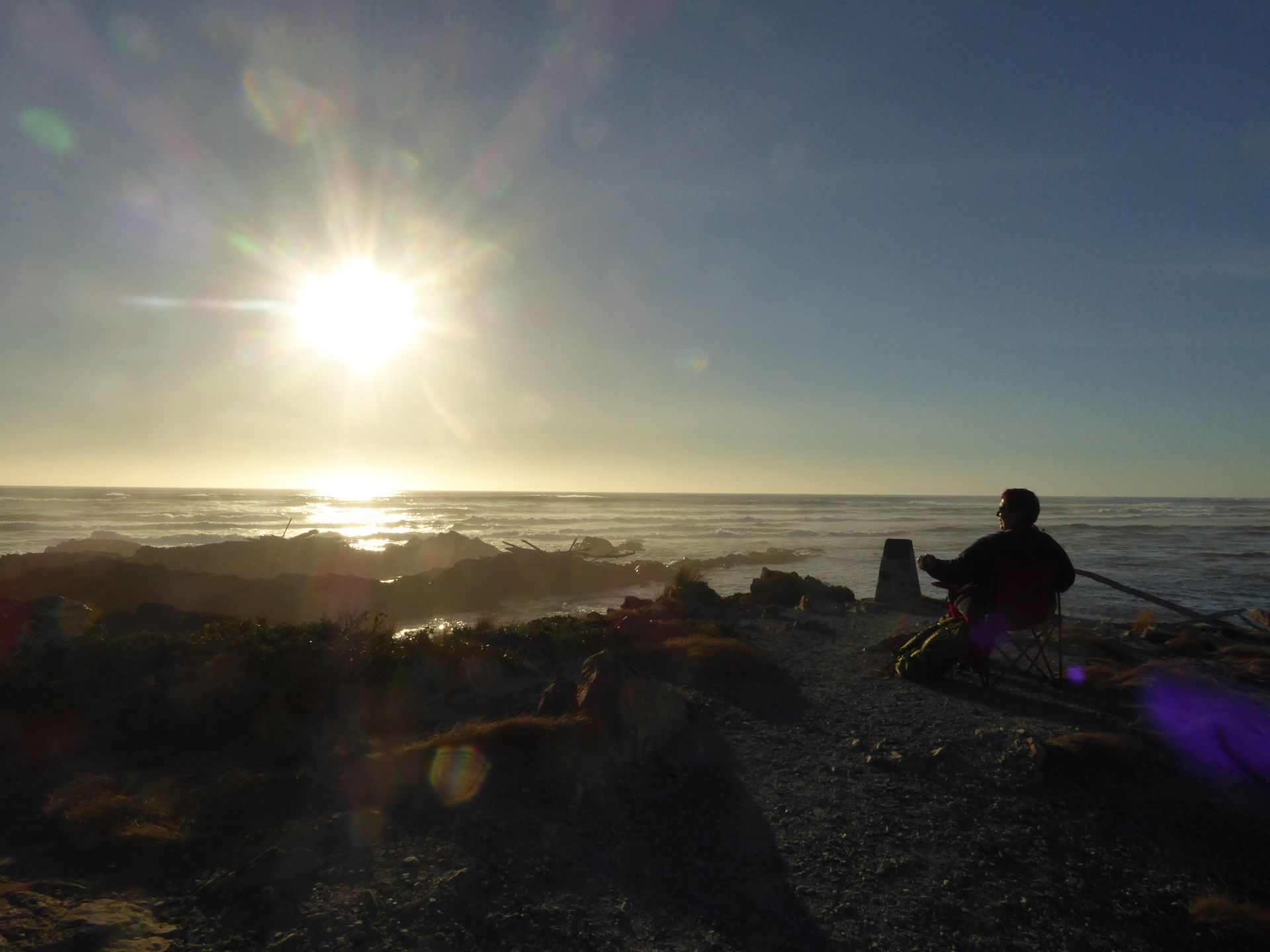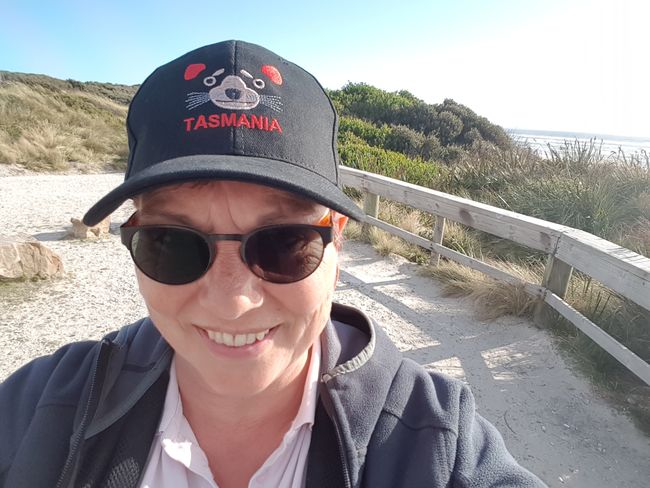
TASMANIEN - 3 Wochen solo im Camper
vakantio.de/tasmanienimcamper
No campground, car breakdown, nice people and a few devils
Paskelbta: 06.02.2018
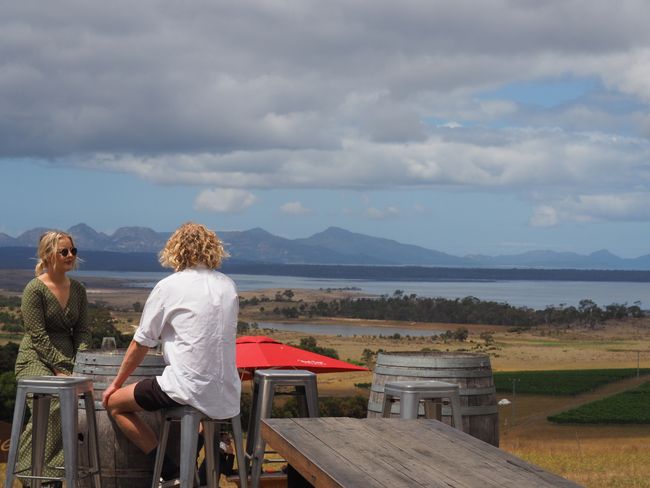
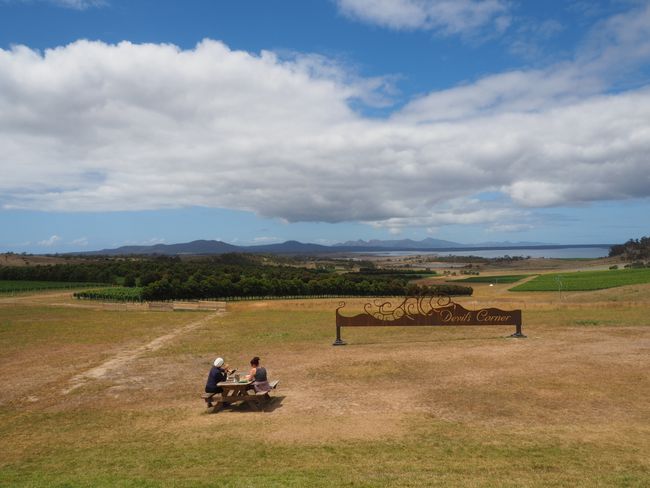
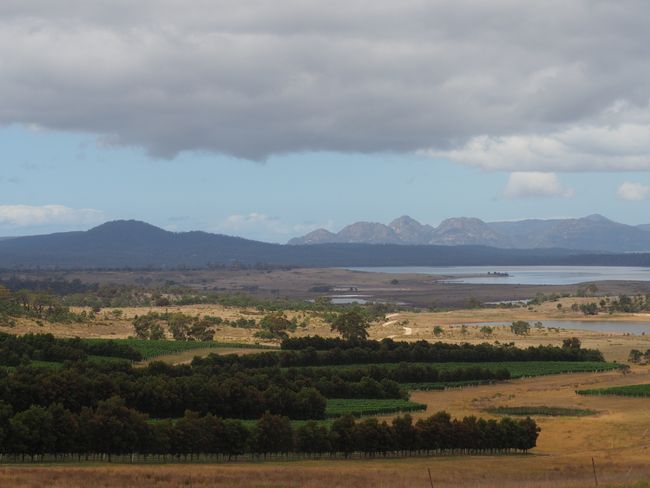
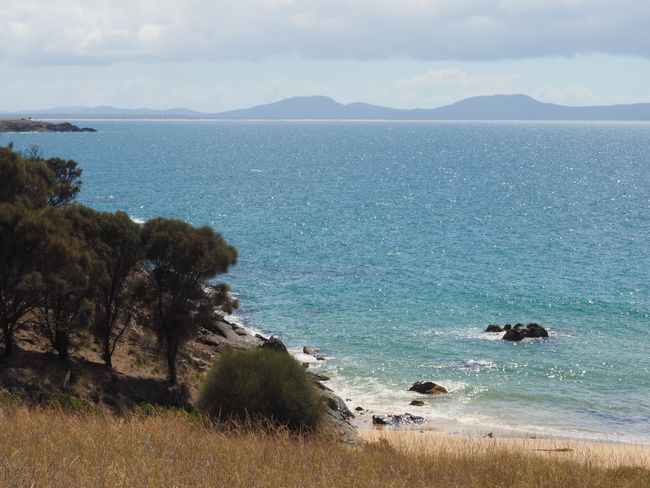
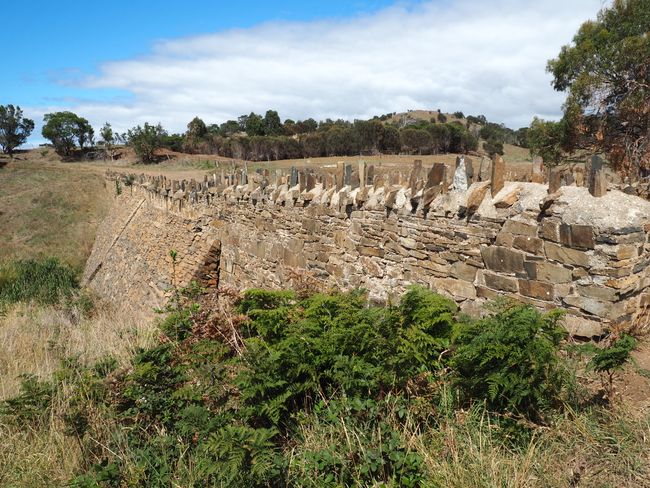
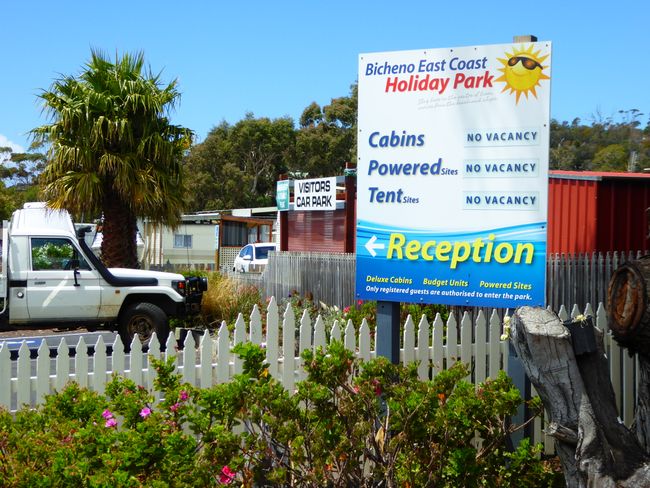
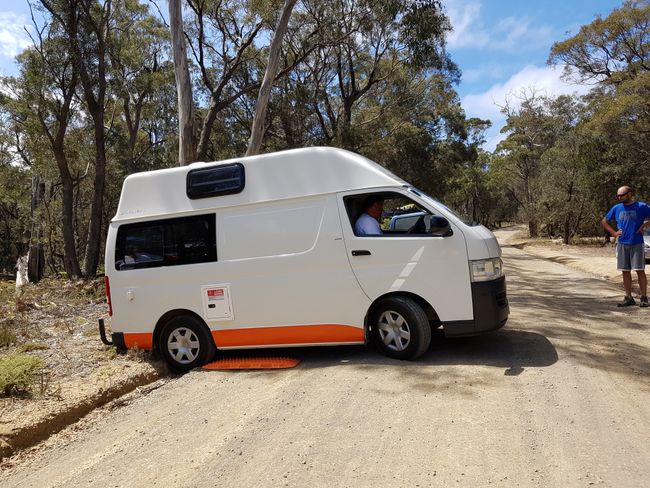
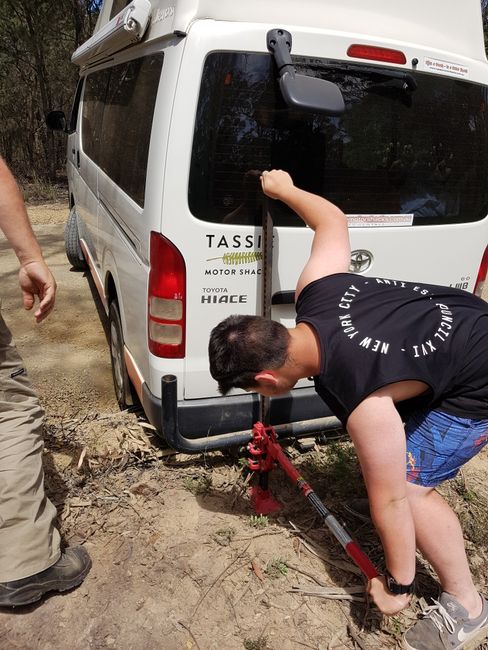
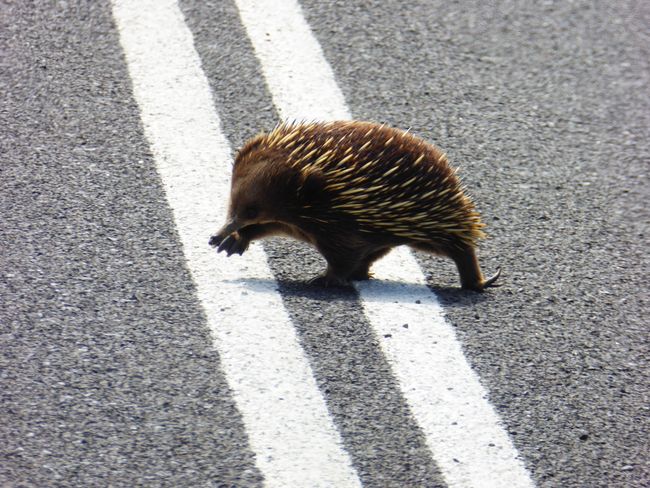
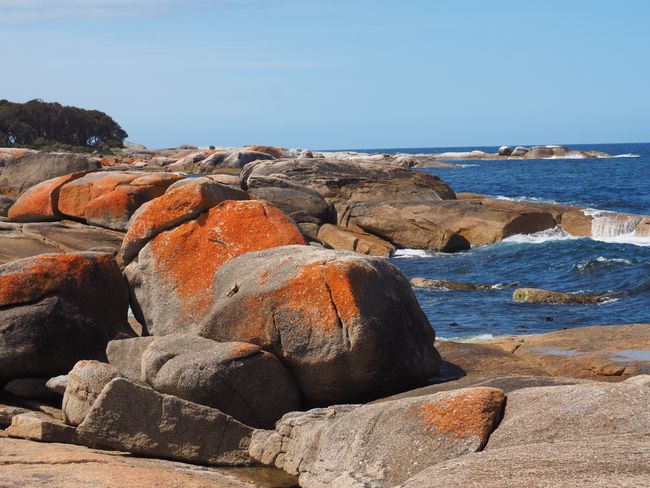
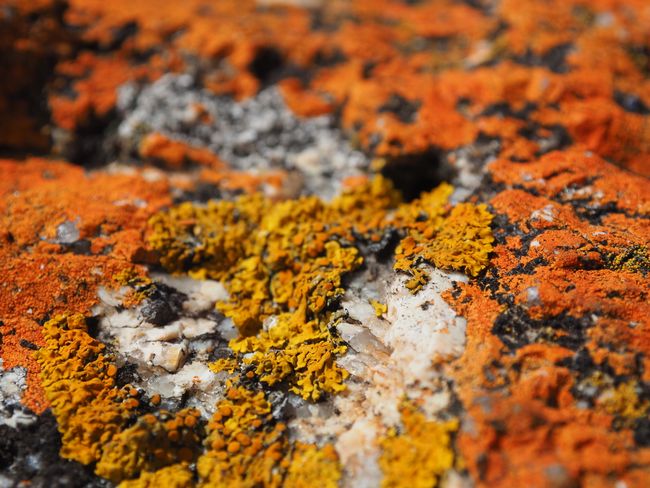
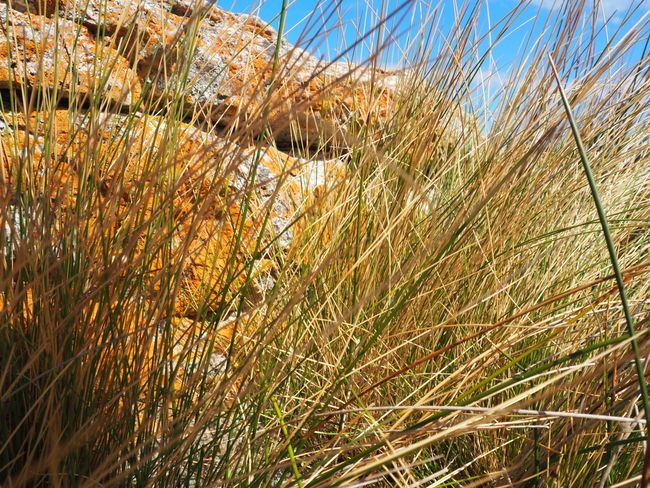
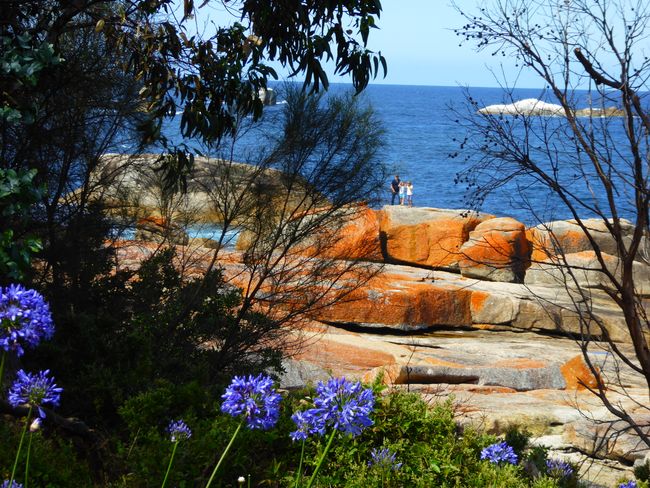
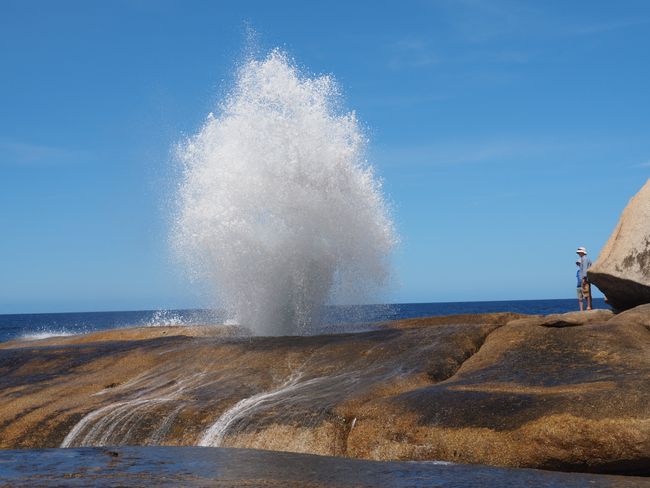
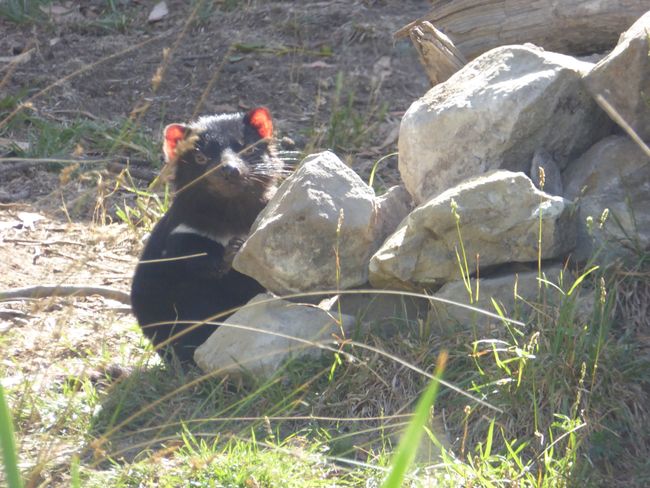
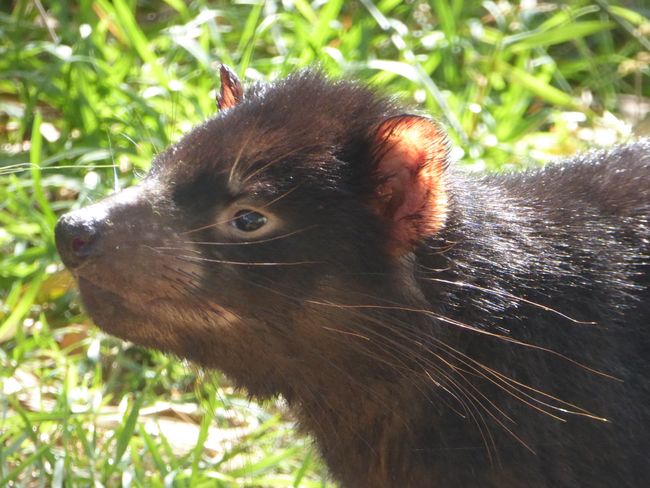
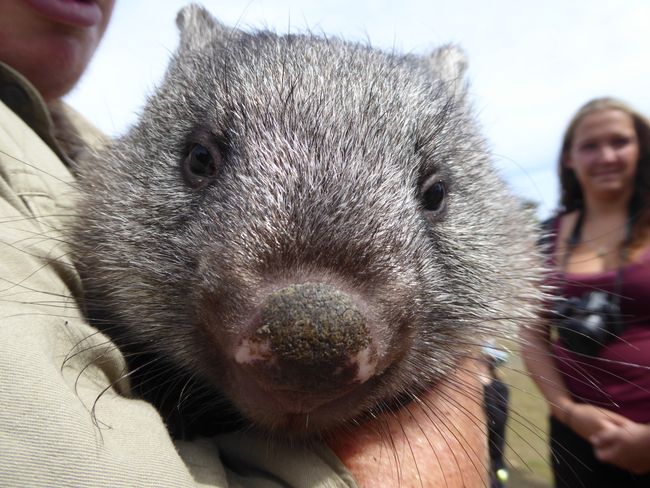
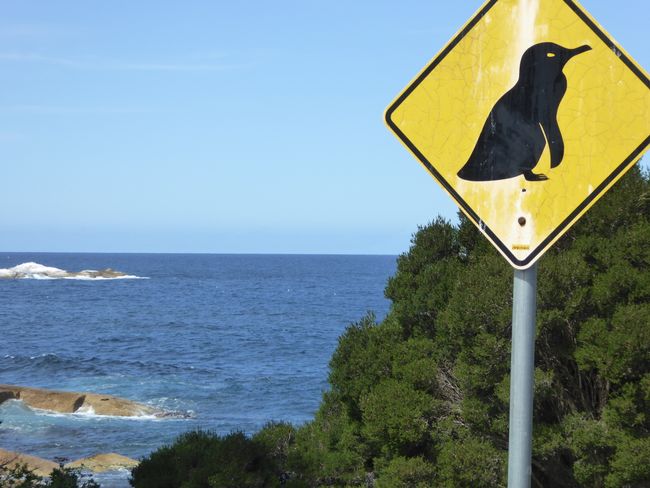
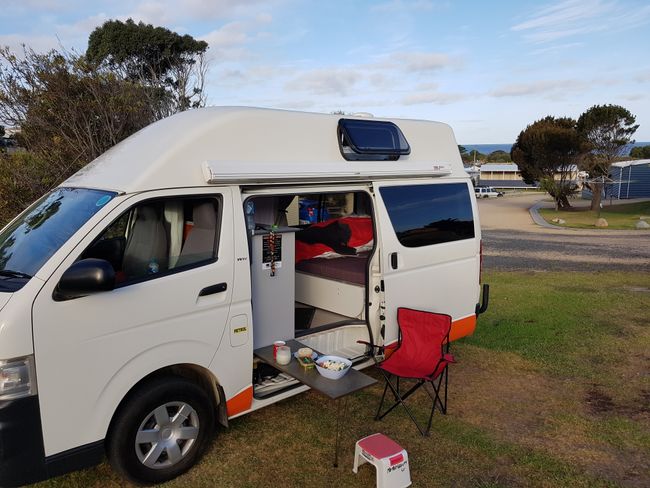
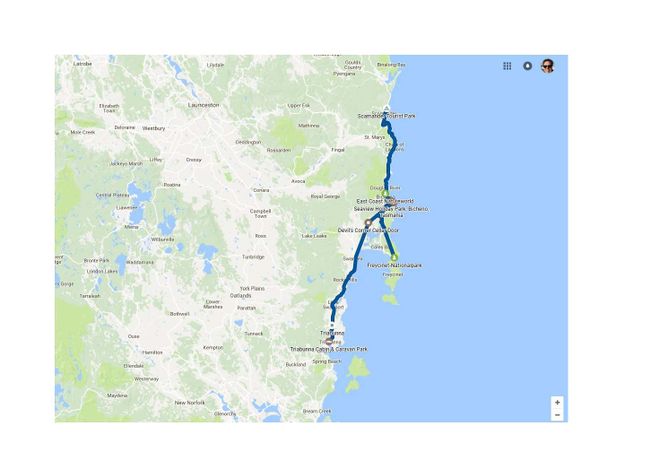
Prenumeruoti naujienas
Wednesday 10.01.18
When I wake up at around 7am, it's 12 degrees Celsius. It must have been below 10°C during the night. It remains gray and doesn't get any warmer because the sun is missing. I make myself muesli with banana and eat a roll. It's 10:00am by the time I have organized myself, washed and packed everything, locked all the cabinets, secured everything, disconnected the power cord and stored it in the back. I decided to skip showering today. Not because I would have had to pay $1 for 6 minutes, but it was just too cold for me.
I drive through landscape that is similar to New Zealand's, but drier. Gentle hills, sheep, cows, trees on the hilltops that consist of an endless trunk with a leafy crown - it all seems familiar to me. The A3, which I'm driving north on today, is easy to navigate. Not much traffic.
I stop at the Spiky Bridge, a bridge from the 19th century - like so many things in Tasmania - built by prisoners. Back then, it was part of a modest infrastructure connection between farms in this area and the larger roads between Swansea and the settlements further south towards Hobart.
Across from the bridge, there is a beautiful view of two small bays, a cliff coast, and the mountains of the Freyinet Peninsula.
I pass a winery at Devils Corner, where I try two sips and choose a white wine. From here, you have a nice view over the Moulting Lagoon, where apparently many black swans can be seen. But I'm too far away to see them. It's busy here, as you can eat fresh fish and drink the delicious wines. But not if you still have to drive afterwards...
I continue driving to Bicheno (pronounced: Bi-she-noh), where I arrive around noon. Unfortunately, all three campsites are full. Great. It's the first proper day and already what I feared. If this continues, it will be interesting. I check my camping apps and find a hint for the Pondering Frog ice cream shop, which is 10km south of Bicheno and where you can park for free - without electricity. But I want to see the blowhole in Bicheno and, above all, the penguins in the evening. If I then arrive at this ice cream shop around 10:30pm, the places might be full and I'll be stuck. What to do? For now, I still drive south, but then turn left in front of this ice cream shop onto the Freyinet Peninsula. I see two echidnas on the side of the road and I'm happy about that, but I'm annoyed that I always have some idiots behind me who speed at 80 km/h on these gravel roads and I can't stop.
I leave the main road and drive onto a narrower gravel road, which leads me to an access point to the Freyinet National Park. But first, I need a park pass for $60 to continue driving. It's valid for the car for 2 months. However, a day pass costs $24, so it's worth it to get the 2-month pass because this won't be the only national park I visit. So I continue driving towards Friendly Beaches, where you can camp for free and there are toilets. But no electricity.
The journey on this bumpy sandy track is dragging on, and I think it's pretty pointless to settle here since I'm already about 30km away from Bicheno now. And if I want to see the blowhole and penguins there, I still have to drive this wilderness track in the dark later in the evening - even more ridiculous than the option of the ice cream shop. So, I turn around.
Actually, the road is wide enough, but it has a small pothole on the edge, and bam - I'm stuck with the rear wheels in that pothole and can't move any further. Nothing works. I'm sideways on this sandy road, and in the last 15-20 minutes, no car has overtaken me or come towards me. My phone has no signal and it's ridiculously hot. How am I going to get out of here? The car doesn't budge a millimeter and I wonder if I may have to wait until tomorrow for someone to pass by here. But what if people speed by in the evening and I'm standing sideways on the road? On both sides, there's only wilderness, and I fear I might come across snakes and spiders here for sure. I can't even find a branch that would help me lift the car - it would be completely useless anyway, as I would never have the strength to lift a camper and sit at the front of the steering wheel at the same time. It's pretty stupid to be alone in such situations.
But I'm lucky and after 10-15 minutes, three cars come in a row, and the young people say they'll simply push. Well, that doesn't work because the car is stuck with the rear wheels dug in. I grab the shovel from my camper, but digging here is not that easy either. The ground is hard and dry.
Then the fourth car arrives, and that's truly my salvation. It's a couple with their grandchild. She's a funny woman, and her husband and the grandchild clearly have fun getting my car unstuck. She always tells the story that her husband Chris always takes all sorts of equipment on vacation, which he carries on the roof of his SUV, but they've never needed it. She always criticizes him for that and now says that she will probably have to hear for the next 30 years how great it is to have all those tools with them because they were able to help the German tourist back then... In short, they have a huge jack that they can use after digging vigorously at the back. Plastic mats are placed under the rear wheels after moving some sand aside, and after about three-quarters of an hour, Grandpa and the grandchild get my car unstuck. Meanwhile, the woman has organized a campground for me in Scamander. I don't care about the blowhole and penguins anymore - I just want to get out of here. Since Scamander is about three-quarters of an hour north of Bicheno, but I'm now almost 30km south of Bicheno, I hit the road because I still want to visit the Nature World wildlife park. I make a loop to the blowhole, take beautiful photos of the rocks with the famous orange lichens against a bright blue sky, and I'm glad that I don't have to stay here because of that.
I speed up and arrive at the East Coast Nature World at 3:50pm. The entry fee is high at $26.50, considering that they close at 5pm, so I don't have much time. The park specializes in taking in native animals that are injured or orphaned, nursing them back to health, and releasing them back into the wild. They have wombats, Tasmanian devils, kangaroos, wallabies, and pademelons, as well as snakes and birds. You can freely roam the grounds, and most of the animals are in enclosures with low walls. The kangaroos roam freely, and you get a small bag of food at the entrance to feed them, and you can even pet the kangaroos. I always find this a bit strange because I think that such animals can never be released into the wild.
A caretaker is currently giving a guided tour, and he gives us some explanations about the wombats. He takes one out of its burrow and shows it to us. Wombats are also marsupials, but their pouch opens backwards, unlike kangaroos. The advantage is that the wombats, which dig burrows, would throw dirt onto their young if their pouch opened in the front while digging. Nature has set it up quite well. The same applies to Tasmanian devils for the same reason.
With a heavy heart, I leave the park at 5pm. I would have liked to look around a bit longer, especially at the devils. One of the kangaroos has a baby in its pouch - also cute. But that's how it is in Australia - many places close at 5pm, and many even earlier. Even in the high season.
Just after 6pm, I arrive at the campground in Scamander and meet my rescuers from this afternoon there again. The three of them are planning to drive towards Devonport tomorrow to catch the ferry the day after tomorrow.
I conjure up a salad outside at the table in front of my camper. From my elevated hillside, I even have a distant view of the ocean. But soon I need thick socks and a jacket. I enjoy a warm shower, upload pictures, and it's after 10pm when I finally lie down horizontally and sleep blissfully after this eventful day.
Prenumeruoti naujienas
Atsakymas
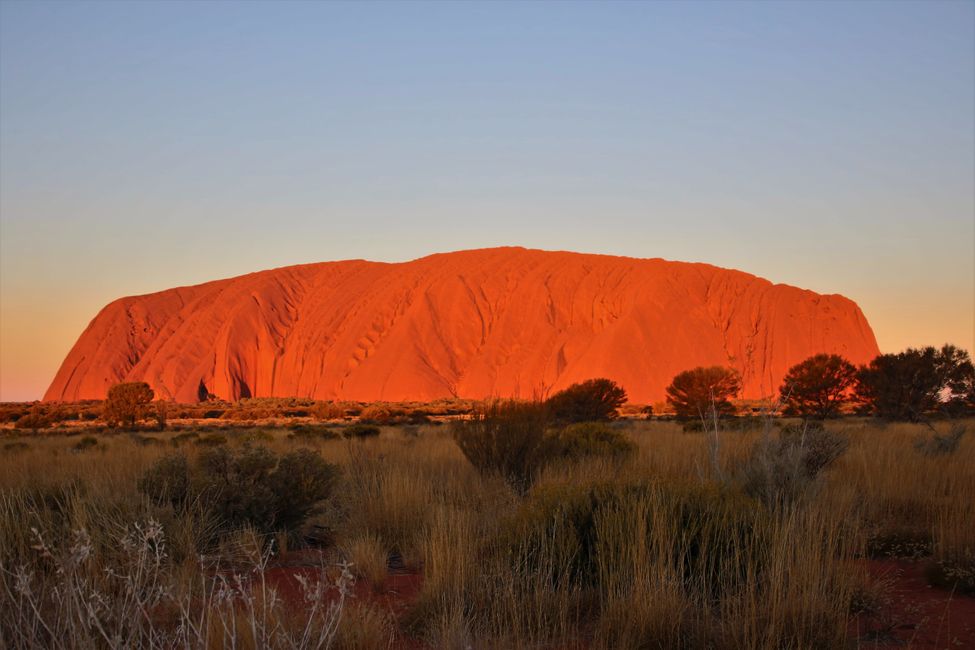
Australija kelionių ataskaitos
